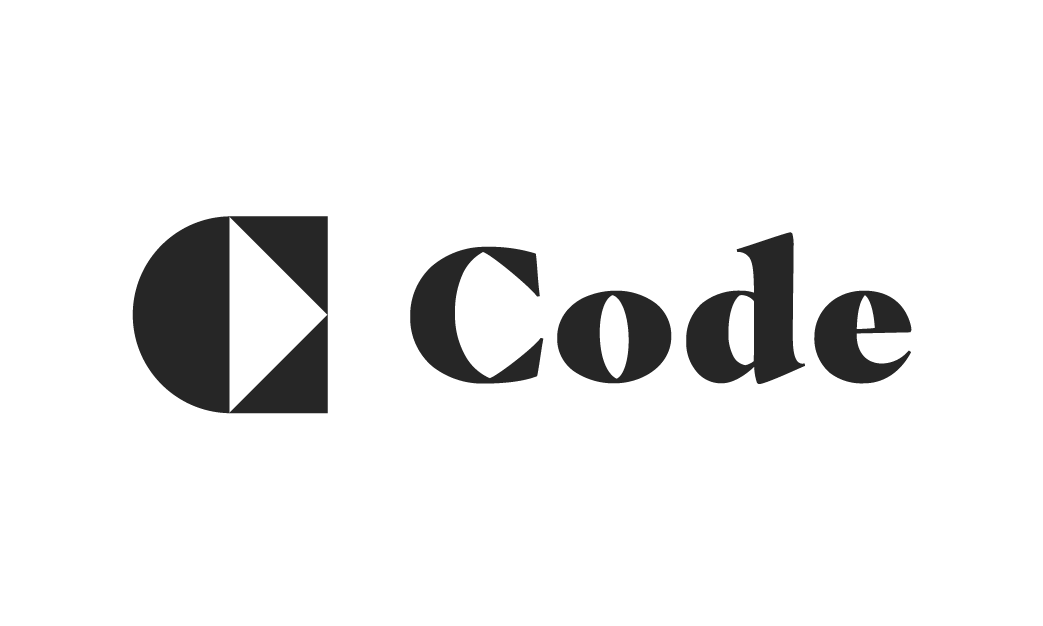ERP - Enterprise Resource Planning
One of the more familiar acronyms you’ll encounter is the ERP acronym. In larger companies, an ERP system often acts as the backbone of operations. It’s a comprehensive software suite that includes various modules for e-commerce businesses, providing seamless enterprise software integration for CRM (Customer Relationship Management), accounting, HR, manufacturing, order management, and inventory management.
Advantages of an ERP system
All these modules are cleverly connected to each other and share information, which saves a lot of work, administration and cost. In addition, it gives everyone in the company the same data, and makes sure the financial side of things is always clear. At their best, ERP systems give you more control, effectiveness and efficiency. For that reason an ERP is an expensive but smart investment for businesses with a complex setup and a lot of data going around, for instance companies with many different sales channels in a variety of countries.
ERP x Shopify Plus
An ERP is usually a level above your e-commerce platform, because its scope is bigger. At Code we see that, up to a certain size, Shopify is the hub of an e-commerce business, and all other systems are connected to Shopify. When a company starts working with an ERP this changes: at that point the ERP becomes the backbone and Shopify one of the systems connected to it.
For large, established companies, the ERP often becomes the core of the business, while they change e-commerce platforms quite frequently. Migrating ERP systems is complex: hence, choosing the right ERP is important because you will likely be working with it for a long time.
Examples of ERP systems
What is available in terms of ERP systems? Of course there’s the big names such as Oracle, SAP, NetSuite and Microsoft Dynamics, but there are ERP suites on the market for slightly smaller businesses as well. Two of them are close to home: Exact and ItsPerfect Fashion ERP, a made-in-Holland ERP specializing in fashion brands.
At Code, while we don’t build ERPs ourselves, we excel at integrating your chosen ERP with your Shopify Plus store(s). Recently we connected a few clients to ItsPerfect (Vandyck, O’Neill, Jane Lushka), and to Microsoft Navision (Megacollections, Boska).
→ Read more about how to choose the right ERP for you business
PIM - Product Information Manager
As the name suggests, a PIM (Product Information Manager) centralizes all your product information in one place. What is a product information management system, and how can it benefit your business?
A PIM gives every product a unique SKU (Stock Keeping Unit), a special code that helps you identify and track the product across various systems. This streamlines your product data management and ensures consistency everywhere.
Advantages of a PIM
A PIM gathers all the details about your products in one place, covering every variant for all channels, countries, and languages (and SEO). This includes product titles, descriptions, categories, images, prices, and sometimes even inventory levels—though inventory management is typically handled by an OMS or WMS (more on that later). With a PIM, you can sync your product data seamlessly with other systems, like Shopify or your ERP, through an API.
→ Read more about how to choose the right PIM solution for your e-commerce
PIM x Shopify Plus
Of course Shopify can store a lot of product data itself as well, but there is a limit to the amount of fields per product - even though extra product information can sometimes prevent a lot of returns. There’s also little room for an endless amount of different variants of the same SKU in Shopify. In a PIM, there’s plenty.
When would a PIM be interesting for your business? If you sell many different products; if you want to display a lot of information about your products; or if you need many variants of your SKU’s and want to keep an overview. You need all those variants if you want to optimize your product information for multiple channels: Shopify storefronts in different languages for instance, sales channels such as market places and social media, search engines, multiple countries with their region-specific customs and regulations, a B2C and a B2B webshop - you name it.
A PIM also ensures a flawless synchronization between the channels. This is essential if you have multiple Shopify stores and want to prevent differences in product information (prices, for instance). What’s more, a PIM can exchange product data in different formats, and with third party systems like those of your fulfillment partner.
Examples of PIMs
Examples of PIMs include Akeneo, Quable and Plytix, which are well-regarded and favorites of Code’s. We've also worked with Katana PIM, a Dutch partner, another great example for businesses seeking a product information management system. Other notable PIMs are Salsify, PIMcore, and Fabric.
→ Read more about Code's PIM services here
OMS - Order Management System
An OMS does more or less what a PIM does, only for orders. Like an ERP it consists of modules. An OMS collects and tracks all orders coming in via all sales channels, and their fulfillment via all the routes available to your business. When an order is placed an OMS saves it, makes a receipt, starts the fulfillment process via an integration with the systems used for logistics, and tracks the order status through packaging, shipping and returns. It checks inventory levels and adjusts them (including returns), takes different warehouse locations into account, prints shipping labels, and can give instructions for order picking and packaging.
Advantages of an OMS
Order Management Systems are primarily used by fulfillment businesses, warehouses, and customer service desks. They are indispensable for e-commerce giants such as Zalando, Amazon and bol.com, who sell in multiple countries and through a variety of channels and store their products at many different locations.
When would an OMS be interesting for your business? Given their cost and the fact that order management can sometimes be automated in other ways, OMS solutions are generally suited for large, international companies. If your order volume is substantial, you operate in various countries and channels, your products are stored in multiple locations, and you have the budget and capability to integrate an OMS seamlessly with your existing systems - then it’s worth your consideration.
OMS x Shopify Plus
When selling online, having some form of order management is essential. For that reason, an e-commerce platform like Shopify Plus already has lots of native order management functions built in. Still, many businesses seek OMS integration with Shopify for advanced functionality. You will very likely also come across an OMS via third parties: when you work with a fulfillment partner they probably use an advanced OMS in which your Shopify store is one of the ‘sales channels’. If you work with an ERP, it will typically also have an OMS module.
Examples of OMS’s
A few of the better-known OMS’s are Veeqo, Brightpearl, nChannel, Manhattan Omni, Skubana, Odoo, and Fabric. At Code, we excel in integrating your store with external partners in the ecosystem. If you're looking to connect an OMS to your Shopify store, we'd be happy to discuss how we can help!
→ Read more about Code's integrations services here
WMS - Warehouse Management System
A WMS is for companies with their own warehouse or distribution center, who take care of fulfillment in-house. The WMS keeps an overview of everything that happens in your warehouse: what goods are coming in, where they are stored, and what the most efficient order-picking route is for a batch of orders.
Additionally, a WMS automates tasks like printing shipping labels. Using handheld scanners and barcodes, a WMS significantly speeds up processes and reduces errors. Moreover, a WMS shows you how to organize things in such a way as to be even more efficient, for instance by storing your bestsellers close to the packing area.
Advantages of a WMS
A WMS is great for optimizing your warehouse and supply chain management tools to reduce errors and increase efficiency. At Code we know from experience that, from c. 50 orders a day and up, mistakes will be made if you take care of storage and fulfillment yourself. A WMS is something for you when you grow out of your brick-and-mortar store, office space or garage and want to start storing your products in a more professional way – but aren’t (yet) ready to outsource it to a 3PL partner (we’ll cover those later). Or if you already have a warehouse and want to take it up a notch in terms of efficiency.
WMS x Shopify Plus
A Warehouse Management System can be a stand-alone solution, or a module in an OMS or ERP. It’s typically easy to connect to other systems or parties, such as Shopify Plus and the carriers you use. If you combine a WMS with Shopify Plus, the connector makes sure that relevant data you add to Shopify (for instance new products) is automatically exported to the WMS, and that the WMS supplies Shopify with real-time inventory levels.
Advantages of WMS software
In the Netherlands, quality WMS software can be found with Picqer and WICS. At Code we used them for clients such as SNURK and Knottenwol, and they’re very happy with it. PeopleVox is also a well known WMS, and as mentioned before there are WMS modules available in OMS’s (a.o. Brightpearl) and ERP systems (a.o. Netsuite).
3PL: Third-Party Logistics
The term Third Party Logistics encompasses all third parties who can take over the fulfillment and shipping of your orders. This type of company is also known under the term ‘fulfillment’ or ‘e-fulfillment’ (for the branch specializing in e-commerce).
Advantages of a fulfilment partner
Outsourcing your fulfillment to a specialist saves you an enormous amount of work. Not only does it take many processes off your hands (storage, inventory management, order picking, packaging, shipping, returns management), often the specialists are better at it than you could ever be. They have (a lot) more storage space than you, with their advanced software they make fewer mistakes, their picking robots work way faster, and because of their contacts with carriers you can typically offer better service at lower cost. Moreover, most e-fulfillment parties make sure they keep you posted on everything they do for you in real-time.
While it may come with a significant cost, the investment is often worth it. Your will have more time to concentrate on your branding, sales, and marketing, and you will have an experienced partner to take care of any logistical challenges .
3PL x Shopify Plus
Fulfillment businesses are typically highly automated and work with specialized software (usually a WMS, often an OMS as well). Many fulfillment parties, particularly the larger ones, have developed their own Shopify Plus connector with which it is quite easy to connect Shopify merchants to their systems. When this is not the case, Code can build you such a connector as well. You can also call us if you need any help connecting your systems to those of your fulfillment partner, for instance because your IT setup is quite complex.
Examples of fulfillment parties
In the Netherlands you can find a lot of e-fulfillment partners, in all possible shapes and sizes. For various clients (Gladskin, Stoov, Daily Paper, MUD Jeans, Filling Pieces) Code has worked with a few who are compatible with Shopify Plus, among them Active Ants, Promese, Bleckmann and Monta (formerly Montapacking).
Choosing your tech stack: Bob’s tip for success
As you can see there is a lot of powerful software available to further automate your e-commerce business, and to optimize parts of your operations by using specialized tools. Such wealth also presents merchants with a dilemma: when to add what to your tech stack, especially when considering digital transformation in e-commerce and scaling efficiently?
Our CCO Bob’s advice: let your choices be informed by your success. “What I mean by that is that the best time to add something new is: when you need it. Not in advance, because some sales guy in a suit told you you cannot do without. Shopify is super easy to connect, so it’s perfectly feasible to connect things like a PIM on the fly.”
Flexible growth with Shopify Plus
Agility is also a big factor in that. An ERP combines a lot of functionality in one, but might also hinder your freedom of movement because of all the customization. When your business is not ‘settled’ yet, a combination of specialized tools might be a better fit for your brand.
This is particularly true for companies that are still in their growth phase. Our clients often grow rapidly but in a controlled way, continuously adapting their tech stack to their evolving needs. Bob says: “With all the out-of-the-box cloud solutions and API’s that are available nowadays, this is a perfectly viable strategy: you practically only need to configure them and off you go.” In addition, make sure to check out what Shopify Plus is planning to launch in terms of new features. A lot of the functionality we mention above is already in Shopify in some form, and is constantly developed further.
Do you really need it? That’s the key question. Make sure to get advice from someone who understands your business needs, like a fellow entrepreneur, rather than just listening to a salesperson. With a single-product-store you don’t need a PIM, and an ERP is only efficient if it matches your needs and the size of your business: unused capacity is never functional.
Have you figured out which external systems could enhance your Shopify store? Or are you still uncertain about what might work best for you? Feel free to send Bob an email! We’re curious to hear about your wishlist and we would love to think along!

.jpg?height=2000&name=Bob%20Rockland%20-%20Code%20(1).jpg)



